🌄🌬🍁🍂🎃🍂🍁🍃💙
🌄🌬🍁🍂🎃🍂🍁🍃💙





Japanese Autumnal Wordporn
More Posts from Monstrous-mind and Others
Why Won’t Our Parker Solar Probe Melt?
This summer, our Parker Solar Probe will launch to travel closer to the Sun than any mission before it, right into the Sun’s outer atmosphere, the corona.

The environment in the corona is unimaginably hot: The spacecraft will travel through material with temperatures greater than 3 million degrees Fahrenheit.
So…why won’t it melt?
The Difference Between Heat and Temperature
Parker Solar Probe was designed from the ground up to keep its instruments safe and cool, but the nature of the corona itself also helps. The key lies in the difference between heat and temperature.
Temperature measures how fast particles are moving, while heat is the total amount of energy that they transfer. The corona is an incredibly thin and tenuous part of the Sun, and there are very few particles there to transfer energy – so while the particles are moving fast (high temperature), they don’t actually transfer much energy to the spacecraft (low heat).

It’s like the difference between putting your hand in a hot oven versus putting it in a pot of boiling water (don’t try this at home!). In the air of the oven, your hand doesn’t get nearly as hot as it would in the much denser water of the boiling pot.
So even though Parker Solar Probe travels through a region with temperatures of several million degrees, the surface of its heat shield will reach only about 2,500 F.

The Heat Shield
Of course, thousands of degrees Fahrenheit is still way too hot for scientific instruments. (For comparison, lava from volcano eruptions can be anywhere between 1,300 to 2,200 F.)
To withstand that heat, Parker Solar Probe is outfitted with a cutting-edge heat shield, called the Thermal Protection System. This heat shield is made of a carbon composite foam sandwiched between two carbon plates. The Sun-facing side is covered with a specially-developed white ceramic coating, applied as a plasma spray, to reflect as much heat as possible.

The heat shield is so good at its job that even though the Sun-facing side of the shield will be at 2,500 F, the instruments in its shadow will remain at a balmy 85 F.
Parker Solar Probe Keeps its Cool
Several other designs on the spacecraft help Parker Solar Probe beat the heat.
Parker Solar Probe is not only studying the Sun – it’s also powered by it. But even though most of the surface area of its solar arrays can be retracted behind the heat shield, even that small exposed segment would quickly make them overheat while at the Sun.

To keep things cool, Parker Solar Probe circulates a single gallon of water through its solar arrays. The water absorbs heat as it passes behind the arrays, then radiates that heat out into space as it flows into the spacecraft’s radiator.
It’s also important for Parker Solar Probe to be able to think on its feet, since it takes about eight minutes for information to travel between Earth and the Sun. If we had to control the spacecraft from Earth, by the time we knew something went wrong, it would be too late to fix it.
So Parker Solar Probe is smart: Along the edges of the heat shield’s shadow are seven sensors. If any of these sensors detect sunlight, they alert the central computer and the spacecraft can correct its position to keep the sensors – and the rest of the instruments – safely protected behind the heat shield.

Over the course of its seven-year mission, Parker Solar Probe will make 24 orbits of our star. On each close approach to the Sun, it will sample the solar wind, study the Sun’s corona, and provide unprecedentedly close up observations from around our star – and armed with its slew of innovative technologies, we know it will keep its cool the whole time.
Parker Solar Probe launches summer 2018 on its mission to study the Sun. Keep up with the latest on the mission at nasa.gov/solarprobe or follow us on Twitter and Facebook.
Make sure to follow us on Tumblr for your regular dose of space: http://nasa.tumblr.com
🔭🌃🌌🪐🍁🍂⛄
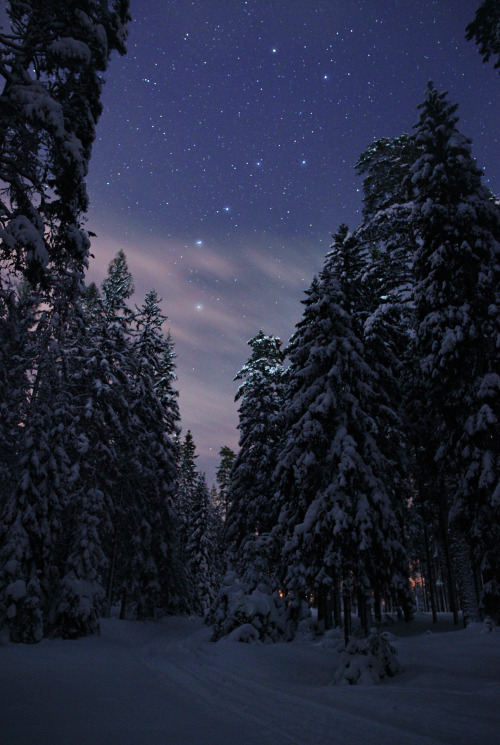
Under the big dipper
by: Mikhail Reva
🐈⬛🐈🎃🍂🍁


When witches go riding, and black cats are seen, the moon laughs and whispers, 'tis near Halloween 🎃🖤🐾
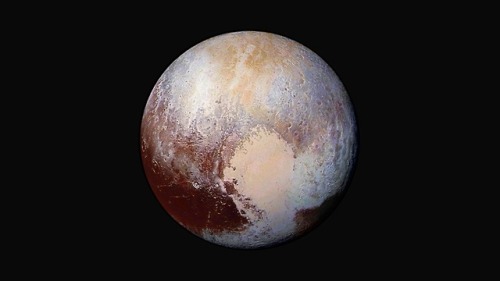

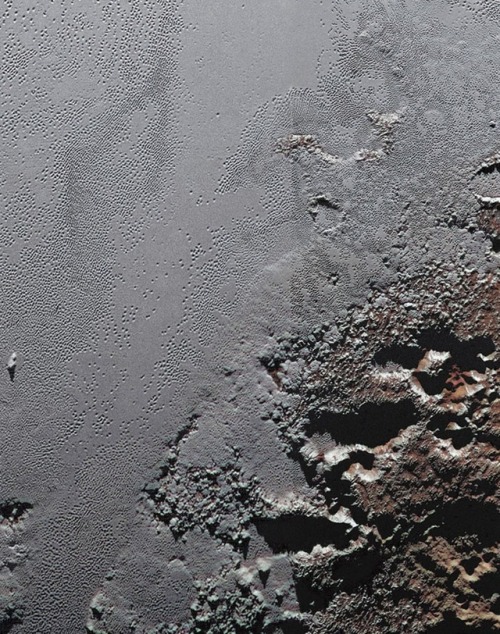
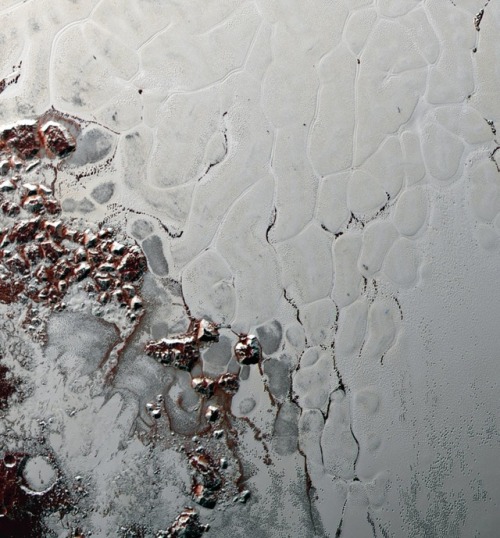
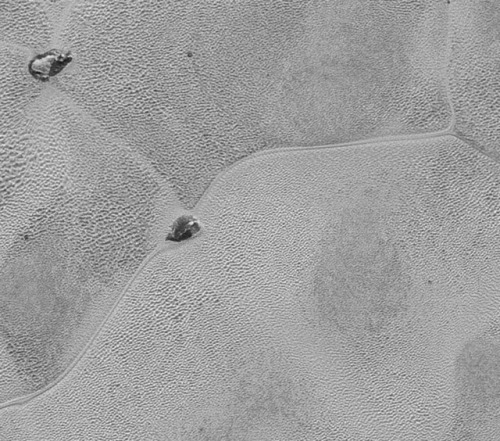
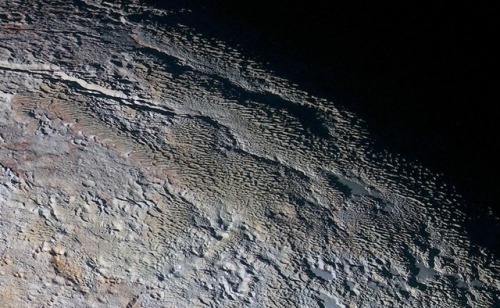
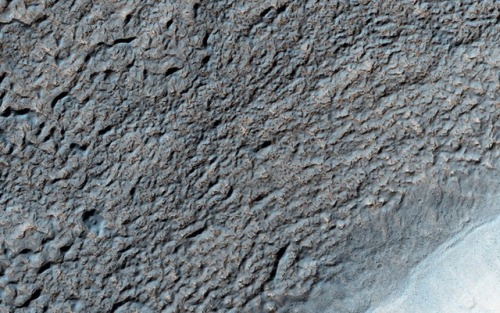
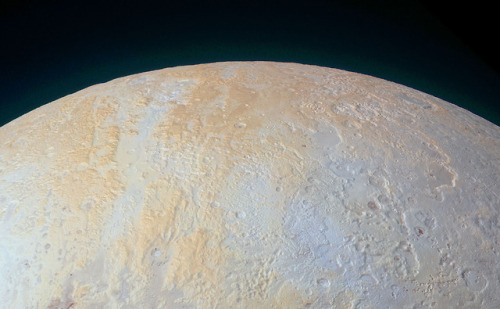
High-resolution images of Pluto taken by NASA’s New Horizons spacecraft.
The plains on Pluto’s surface are composed of more than 98 percent nitrogen ice, with traces of methane and carbon monoxide. Nitrogen and carbon monoxide are most abundant on the anti-Charon face of Pluto (around 180° longitude, where Tombaugh Regio’s western lobe, Sputnik Planitia, is located), whereas methane is most abundant near 300° east. The mountains are made of water ice. Pluto’s surface is quite varied, with large differences in both brightness and color. Pluto is one of the most contrastive bodies in the Solar System, with as much contrast as Saturn’s moon Iapetus. The color varies from charcoal black, to dark orange and white. Pluto’s color is more similar to that of Io with slightly more orange and significantly less red than Mars. Notable geographical features include Tombaugh Regio, or the “Heart” (a large bright area on the side opposite Charon), Cthulhu Macula, or the “Whale” (a large dark area on the trailing hemisphere), and the “Brass Knuckles” (a series of equatorial dark areas on the leading hemisphere). Sputnik Planitia, the western lobe of the “Heart”, is a 1,000 km-wide basin of frozen nitrogen and carbon monoxide ices, divided into polygonal cells, which are interpreted as convection cells that carry floating blocks of water ice crust and sublimation pits towards their margins; there are obvious signs of glacial flows both into and out of the basin. It has no craters that were visible to New Horizons, indicating that its surface is less than 10 million years old.
source | images: NASA/JPL
🐾🐈💀


🎃 kitty and her pumpkin coven 🎃

🌌☄️🌃🍂🍁

2024 August 14
Meteors and Aurora over Germany Image Credit & Copyright: Chantal Anders
Explanation: This was an unusual night. For one thing, the night sky of August 11 and 12, earlier this week, occurred near the peak of the annual Perseid Meteor Shower. Therefore, meteors streaked across the dark night as small bits cast off from Comet Swift-Tuttle came crashing into the Earth’s atmosphere. Even more unusually, for central Germany at least, the night sky glowed purple. The red-blue hue was due to aurora caused by an explosion of particles from the Sun a few days before. This auroral storm was so intense that it was seen as far south as Texas and Italy, in Earth’s northern hemisphere. The featured image composite was built from 7 exposures taken over 26 minutes from Ense, Germany. The Perseids occur predictably every August, but auroras visible this far south are more unusual and less predictable.
∞ Source: apod.nasa.gov/apod/ap240814.html
🎃🍂🍁🌌☕
Halloween cat

The NASA/ESA Hubble Space Telescope captures the iridescent tapestry of star birth in a neighbouring galaxy in this panoramic view of glowing gas, dark dust clouds, and young, hot stars.
Credit: NASA/ESA and the Hubble Heritage Team (AURA/STScI/HEIC)
-
 allium-florist liked this · 6 months ago
allium-florist liked this · 6 months ago -
 cottage-to-the-core reblogged this · 2 years ago
cottage-to-the-core reblogged this · 2 years ago -
 that-gay-jedi liked this · 2 years ago
that-gay-jedi liked this · 2 years ago -
 autumnophilia reblogged this · 2 years ago
autumnophilia reblogged this · 2 years ago -
 iamanimaginarybeing liked this · 2 years ago
iamanimaginarybeing liked this · 2 years ago -
 clarensiai liked this · 2 years ago
clarensiai liked this · 2 years ago -
 offtosimpjail liked this · 3 years ago
offtosimpjail liked this · 3 years ago -
 monstrous-mind liked this · 3 years ago
monstrous-mind liked this · 3 years ago -
 monstrous-mind reblogged this · 3 years ago
monstrous-mind reblogged this · 3 years ago -
 amandac243 liked this · 3 years ago
amandac243 liked this · 3 years ago -
 sushiknives-sketchbook liked this · 3 years ago
sushiknives-sketchbook liked this · 3 years ago -
 pumpkintheapplepie reblogged this · 3 years ago
pumpkintheapplepie reblogged this · 3 years ago -
 yukitsubasastuff liked this · 3 years ago
yukitsubasastuff liked this · 3 years ago -
 hs4rtn3ss reblogged this · 3 years ago
hs4rtn3ss reblogged this · 3 years ago -
 hs4rtn3ss liked this · 3 years ago
hs4rtn3ss liked this · 3 years ago -
 insidetheheadofanoverthinker liked this · 3 years ago
insidetheheadofanoverthinker liked this · 3 years ago -
 dragonwhispe reblogged this · 3 years ago
dragonwhispe reblogged this · 3 years ago -
 dragonwhispe liked this · 3 years ago
dragonwhispe liked this · 3 years ago -
 purpleforest liked this · 3 years ago
purpleforest liked this · 3 years ago -
 achingly-shy liked this · 3 years ago
achingly-shy liked this · 3 years ago -
 captainoliviabenson23 liked this · 3 years ago
captainoliviabenson23 liked this · 3 years ago -
 ashlinncovere liked this · 3 years ago
ashlinncovere liked this · 3 years ago -
 dreamonx liked this · 3 years ago
dreamonx liked this · 3 years ago -
 distinguishedlight reblogged this · 3 years ago
distinguishedlight reblogged this · 3 years ago -
 distinguishedlight liked this · 3 years ago
distinguishedlight liked this · 3 years ago -
 autumnophilia reblogged this · 3 years ago
autumnophilia reblogged this · 3 years ago -
 iamanimaginarybeing reblogged this · 3 years ago
iamanimaginarybeing reblogged this · 3 years ago -
 idkfamimlonelyandilikekpop liked this · 3 years ago
idkfamimlonelyandilikekpop liked this · 3 years ago -
 autumnophilia reblogged this · 3 years ago
autumnophilia reblogged this · 3 years ago -
 honey-lemon-flower liked this · 3 years ago
honey-lemon-flower liked this · 3 years ago -
 home-is-where-iam liked this · 3 years ago
home-is-where-iam liked this · 3 years ago -
 a--throwaway liked this · 3 years ago
a--throwaway liked this · 3 years ago -
 lamaciel-writer liked this · 3 years ago
lamaciel-writer liked this · 3 years ago -
 nostalgia-detective liked this · 3 years ago
nostalgia-detective liked this · 3 years ago -
 sevenmagpie liked this · 3 years ago
sevenmagpie liked this · 3 years ago -
 lovely-rainyfall liked this · 3 years ago
lovely-rainyfall liked this · 3 years ago -
 xfrosted-leavesx reblogged this · 3 years ago
xfrosted-leavesx reblogged this · 3 years ago -
 claraschaos liked this · 3 years ago
claraschaos liked this · 3 years ago -
 depplover91 reblogged this · 3 years ago
depplover91 reblogged this · 3 years ago -
 frozen-river liked this · 3 years ago
frozen-river liked this · 3 years ago -
 thegreatbundgy reblogged this · 3 years ago
thegreatbundgy reblogged this · 3 years ago -
 clearobjectpizza liked this · 3 years ago
clearobjectpizza liked this · 3 years ago -
 autumnal-experience reblogged this · 3 years ago
autumnal-experience reblogged this · 3 years ago -
 beanstringer13 liked this · 3 years ago
beanstringer13 liked this · 3 years ago
My ambition is handicapped by laziness. -C. Bukowski Me gustan las personas desesperadas con mentes rotas y destinos rotos. Están llenos de sorpresas y explosiones. -C. Bukowski. I love cats. Born in the early 80's, raised in the 90's. I like Nature, Autumn, books, landscapes, cold days, cloudy Windy days, space, Science, Paleontology, Biology, Astronomy, History, Social Sciences, Drawing, spending the night watching at the stars, Rick & Morty. I'm a lazy ass.
222 posts